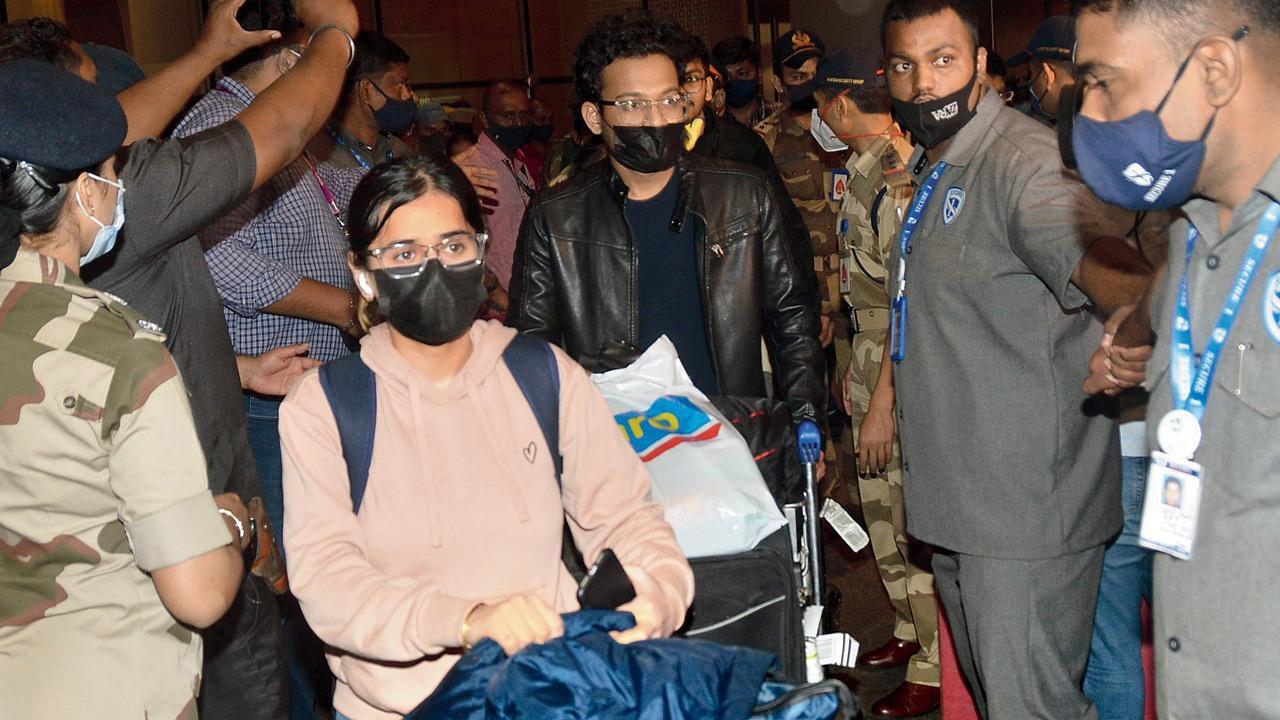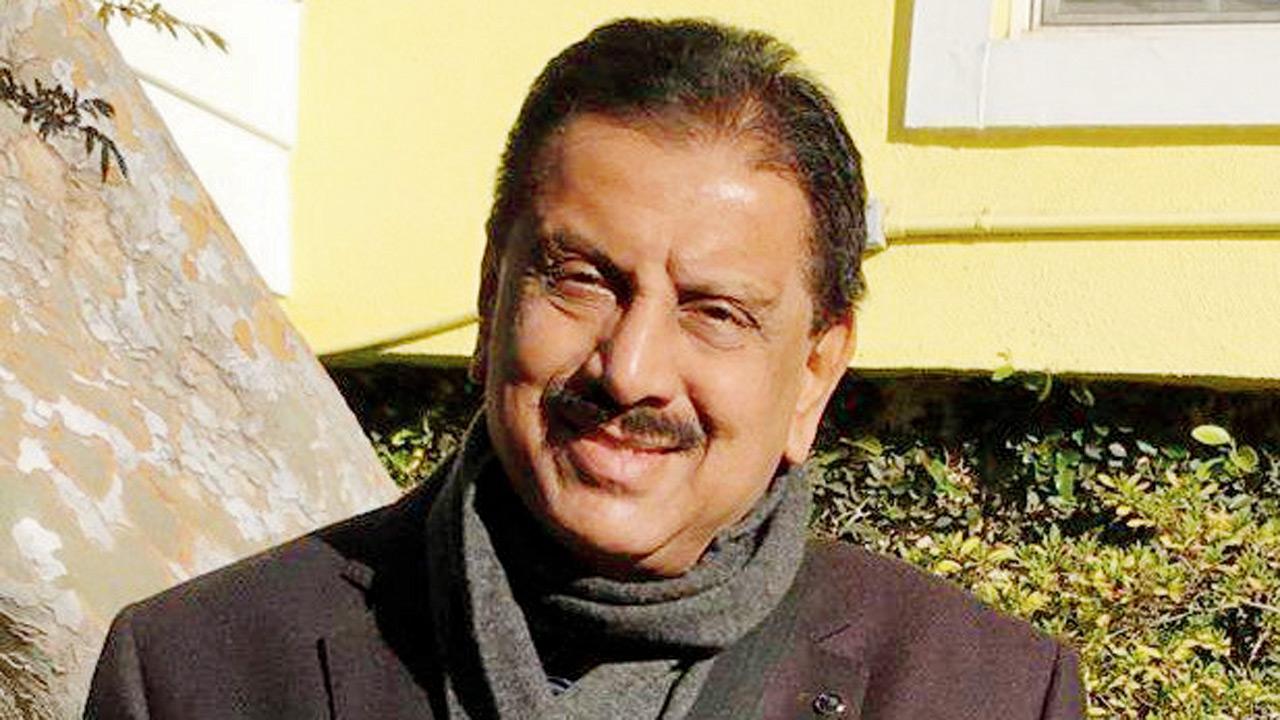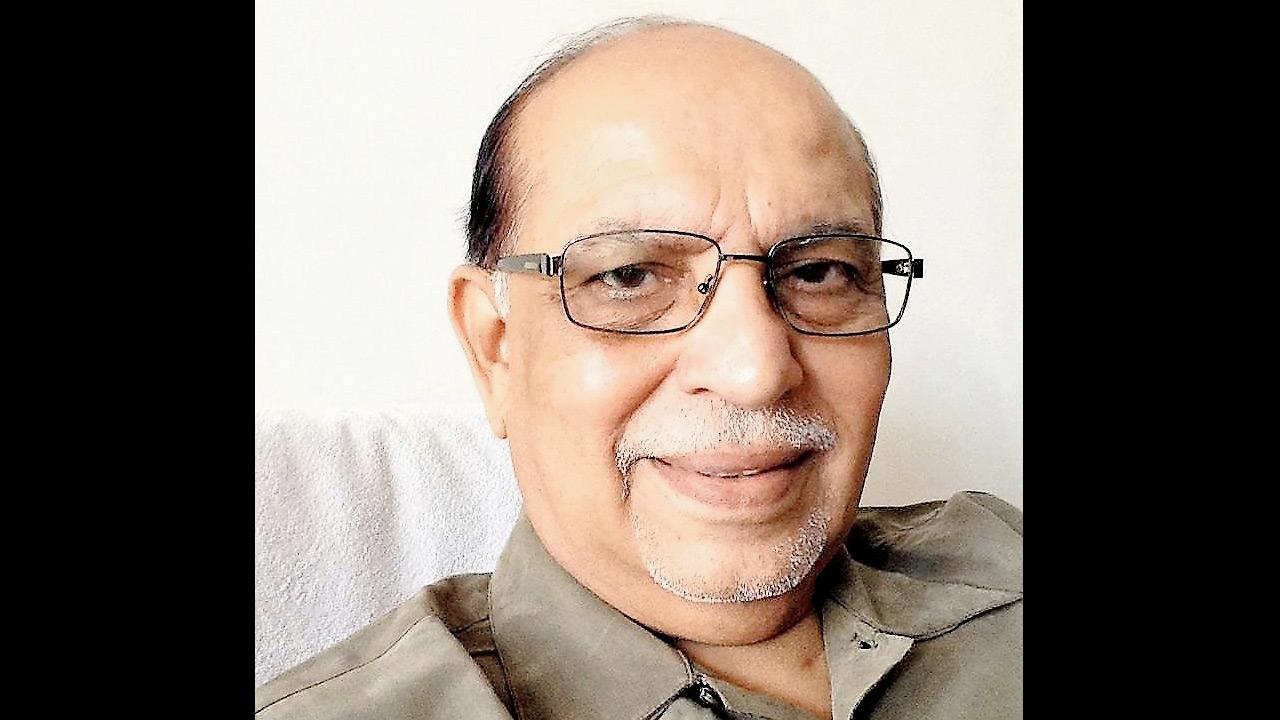Highlighting how Spanish Flu spread during World War I, docs ask authorities to learn from history and avoid committing same mistakes

An Indian student from Ukraine arrives at Chhatrapati Shivaji Maharaj International Airport last week. Pic/Sayyed Sameer Abedi
Health experts, while pointing out similarities between the present Russia-Ukraine war amidst the Covid-19 pandemic, and the Spanish flu outbreak during World War 1 in 1918, have expressed concern about an expected rise in infection rates due to mass movement of affected people and war refugees.
ADVERTISEMENT
Nearly five crore people died from the Spanish flu during three years of World War I. According to experts, authorities have much to learn from that incident. Instead of throwing caution to the wind, they should strictly monitor and screen returnees to prevent a similar surge in Covid era.
Around 12 lakh people have been evacuated from Ukraine in the last 10 days due to the ongoing situation. “Considering high Covid-19 infection rates in Ukraine [around 10 per cent] before the war, the chances of many of them being carriers of the infection to other countries cannot be ruled out,” said Dr Subhash Hira, professor of Global Health at University of Washington-Seattle and advisor to WHO-TDR-Geneva.
Lessons from Spanish flu
The first influenza virus case was documented in January 1918 in Kansas, USA; it quickly spread to New York due to transportation of large war cargos between New York and Europe. In August 1918, a more virulent strain of the influenza flu was documented in France, Sierra Leone, Spain, and the US. “In the next six months, the flu killed 50 million people. New research suggests this strain was essentially created in the trenches. Soldiers of allied forces with mild strains of the virus were left in the crowded trenches, while those with severe illness were sent home to Asia and Europe. When they returned home, they would infect those who came in contact with them. This newer and deadlier form of the virus was a mutation. Those who recovered from the first strain in early 1918 were immune to the second mutant strain,” said Dr Hira.

Dr Wiqar Shaikh
Like in the case of World War I, fresh mutations of Covid-19 in the current situation cannot be ruled out, he added. “With evacuation services of large groups underway, there’s a need for strict Covid-19 screening tests at departure and arrivals,” he added.
The pandemic isn’t over yet
On March 2, Russia had recorded an average of over 90,000 Covid-19 per day cases, while Ukraine had recorded a daily average of almost 4,000 cases before the start of the war.
Dr Wiqar Shaikh, Professor of Medicine, Grant Medical College and Sir JJ Group of Hospitals said that under these circumstances, it was surprising to see that students and passengers returning from Ukraine to India were not being made to take the RT-PCR tests. “It will be impossible to determine which student or passenger needs to be isolated.”
Dr Shaikh said that Spanish Flu saw four waves, with the last one in 1920. In the current situation, he feels that India will witness its fourth wave by June. “The pandemic isn’t over yet, and needs to be taken more seriously,” he said.

Dr Subhash Hira
Santosh Bansode, Head of the Department, Emergency Medicine, Wockhardt Hospitals, Mumbai Central, said that Covid protocols should continue, even in emergency situations. “By the end of WWI, rescued people were being screened and isolated. This helped control the spread.” With advancement in medicine and technology, this wouldn’t be an impossible to feat to achieve now, he thinks.
 Subscribe today by clicking the link and stay updated with the latest news!" Click here!
Subscribe today by clicking the link and stay updated with the latest news!" Click here!







